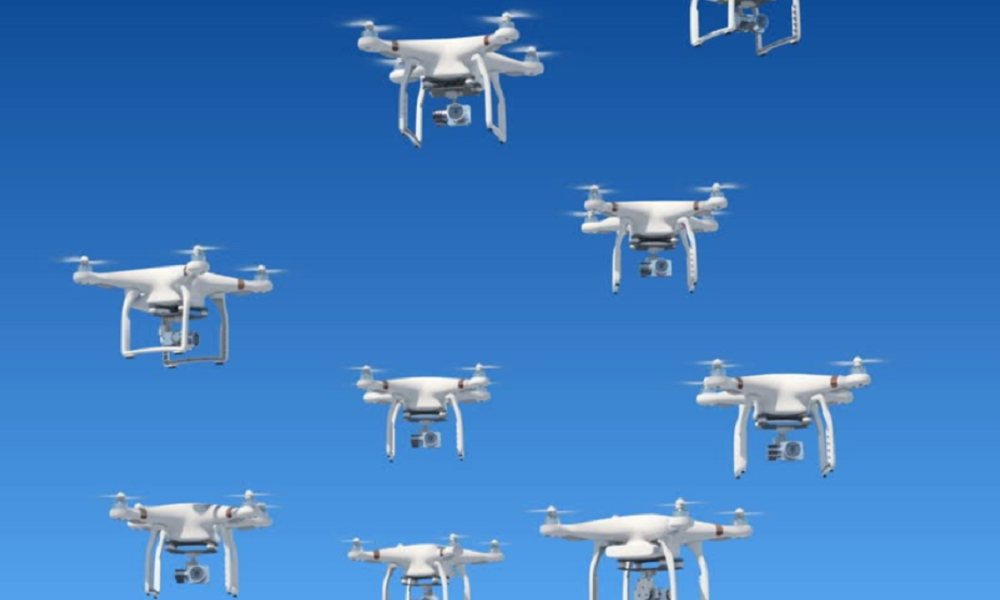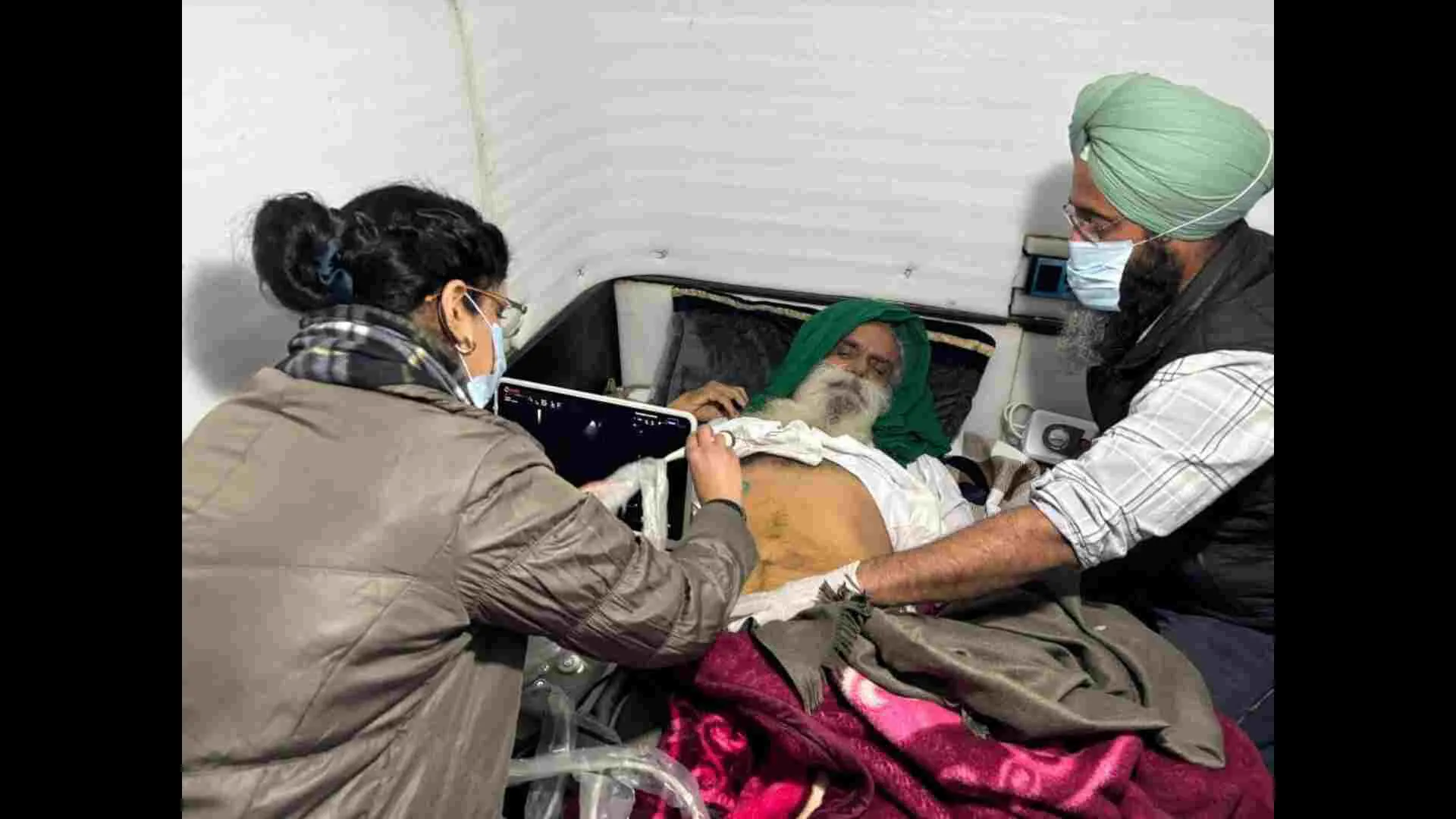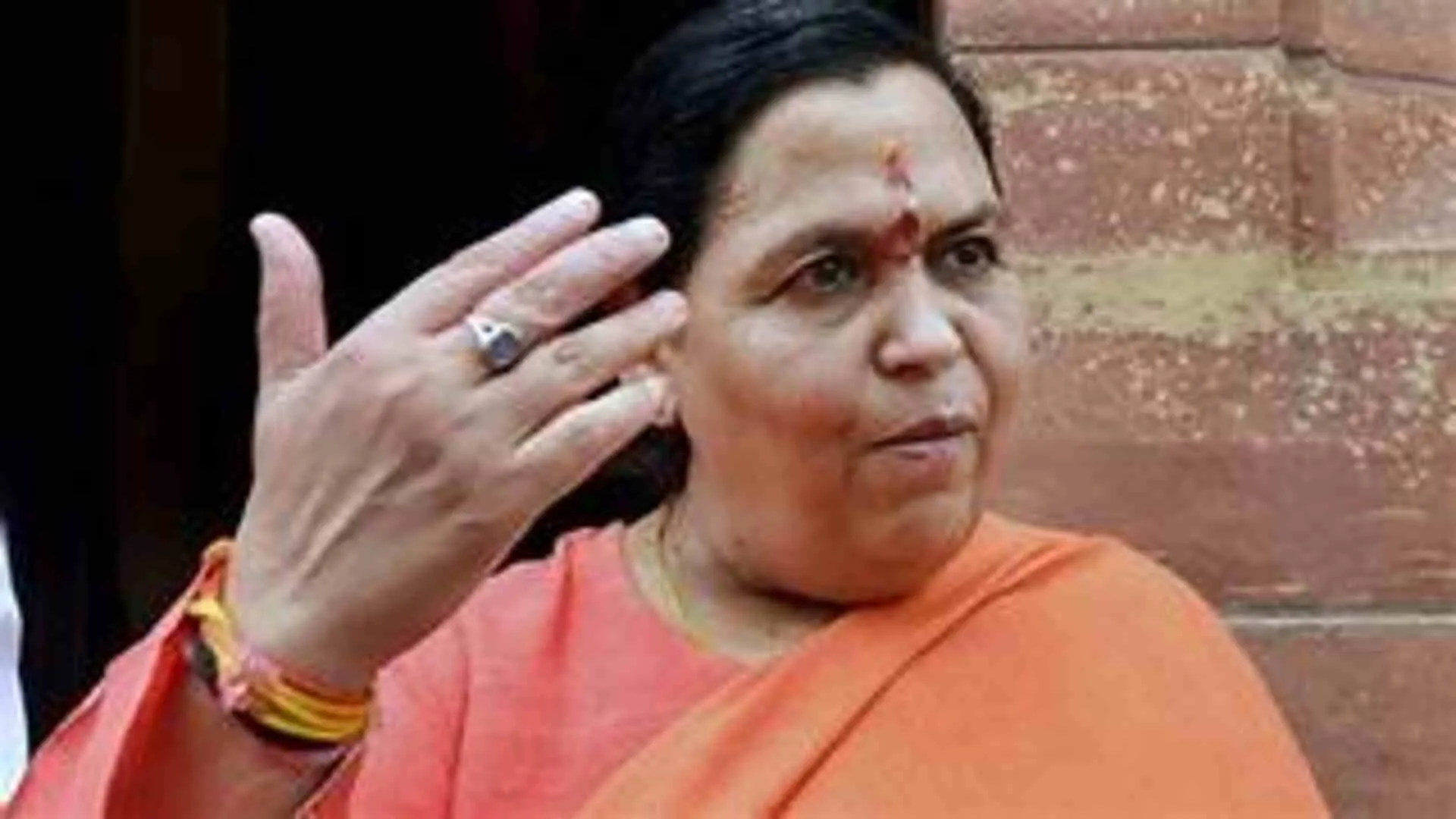Drones flying at wedding venues are so common and make us accidently act photogenic at various moments. But there is a complicated system and evolving law behind it. Drones are also known as Unmanned Aircraft Vehicle/System [UAV/ UAS] or Remotely Piloted Aircraft Systems [RPAS], play an inevitable role in protecting and violating national security. Presence and usage of drones are identified from the Second World War. Afterwards European Union established European Aviation Safety Agency and United States established Federal Aviation Authority as the authority regulating the manufacture, use, imports and jurisdictional aspects of drones of their countries. Thereafter in 2017, China showed a marathon flying tests of two thousand drones.
India was found hesitating to adopt, adapt and regulate the drone culture. But several industries used drones for their own purposes which made the state to open its eyes to welcome and regulate drones. India laid foundation on regulating drones by publishing first draft of regulation on 20th April 2016 where the inputs from public were entertained. After repeated deliberations, the Director General of Civil Aviation published the second draft regulations on 1st November 2017, where indigenous R& D of RPAS and designated testing centers were given thrust. The second draft regulation failed to regulate issues with regard to airworthiness certification of developed RPAS, license to manufacturers, single window clearance for pilot [UAP] and operator permit license [UAOP].
Further the draft was abandoned due to lack of experts and many other internal reasons. Later the idea is found to be revived in “Make in India” initiative of the Government. For the same, the Ministry of Civil Aviation [MoCA] has organized a team consisting thirteen members under the Chairmanship of State Minister in 2018. The team consisted of members from concerned ministries, R&D, academics etc. On August 27 2018, the ministry published Drone Regulations 1.0 which superseded the DGCA notification dated 7th October 2014 by enabling the operation of civil RPAS. Even though it acted as green signal, the license and clearances from various departments and authorities were tedious and hindering easiness.
In order to resolve this, Digital Sky was launched by the government on 21st November aimed to digitize various filings involved in the low flying RPAS, Air Traffic Controllers [ATC]. Digital Sky worked on “No Permission, No Take off” and marked airspace into three zones, i.e. “RED ZONE” i.e. area where flying is not permitted, “YELLOW ZONE” controlled airspace where permission is required for flying and “GREEN ZONE” uncontrolled area where no permission is required to fly. Digital Sky Policy has aimed to support territorial drone manufacturers, unfortunately it didn’t; due to various implementation issues in “Make in India”. As far as Indian Manufacturers are concerned, UAV, RPAS and similar vehicles are under the head of defence items and hence required permissions from Department of Industrial Policy and Promotion [DIPP]. Apart from that there was additional financial burden imposed by the Ministry of Defence. Hence it remained as an unfulfilled dream.
On January 2019, MoCA published Drone Ecosystem Policy Road Map aimed to enable drone operation without sacrificing security, safety and reliance. Other objectives behind the Roadmap were real-time fully digitized regulatory system, enabling use of RPAS not prohibited by concerned authority and boosting R&D with human centric and risk based approach.
The major step adopted by MoCA is the issuance of public notice dated 13th January 2020 calling for voluntary disclosure of non-compliant drones flying in India and allotting Drone Acknowledgement Number (DAN) and Owner Acknowledgement Number (OAN). The disclosure is allowed to made through the digital sky website till 31st January and is extended vide public notice dated 08/06/2020. Vide 2nd May 2020 notification, six zone cites have been approved for No Permission No Take off i.e. Tumkur (Karnataka), Nandyal (Andhra Pradesh), Sonesade (Maharashtra), Neemarana (Rajasthan), Arani (Tamil Nadu) and Khasra (West Bengal). On the same day notification has been issued declaring conditional exemption to government entities for COVID-19 related RPAS operations.
On 2 June 2020, MoCA published the draft rules on the Unmanned Aircraft System Rules, 2020 associated with the Aircraft Act 1934. The ministry has invited suggestions from public to enhance the implementation capacity of the rules. Let us now briefly over look each Part contained in the Rules.
Jurisdiction
Part I of the Rules deal with jurisdiction, definitions and interpretations. Rule 1 confirms
Application of the Rules across India; and shall come into force on the date of final publication in the Gazette and Aircraft rules 1937 shall not apply on UAS unless specifically stated.
UAS registered in India Persons owning, possessing, manufacturing, trading, leasing, maintaining and operating
All UAS in and over India.
Categories
Part II says categorization of UAS, where r.3 narrates three categories.
Remotely Piloted Aircraft System is an unmanned aircraft which is piloted from a remote station through required Commands and control links.
Model Remotely Piloted Aircraft System is a remotely piloted aircraft without a component or equipment or any other material onboard the UA which is not required for flight or its control; used only for educational or experimental purposes and flown within visual line of sight [LoS] of persons operating the RPAS.
Autonomous Unmanned Aircraft System is the aircraft which does not require intervention of pilot for managing the flight.
Further the Unmanned Aircraft is classified into four, based on their mass; namely Nano (<=250g), Micro (250gm<=2Kg), Small (2Kg<=150Kg), Medium (25Kg<=150Kg) and Large (>150Kg). This is specified under r.4 of the UA rules. It is acknowledged in the said rule that Nano can be brought under the next higher category, if it exceeds maximum speed in level flight limited to 15m/s. or maximum attainable height limited to 15 m and range limited to 100 m from the remote pilot.
Authorization
Part III of the Rules provides rules with respect to authorization of importer, manufacturer, trader, owner and operator. The authorization is given by the Director General by which the persons involved will be prefixed “Authorized UAS”.
Requirements
In case of an individual, he must be the citizen of India and has eighteen years of age or more.
Companies having its registered office in India and the Chairman and at least two-third of its directors must be Indian citizens.
Firms, associations, body of individuals, local authority or legal entity irrespective of incorporation, Central or the state government.
Conditions as specified in Sch.I
Any person fulfilling the above said conditions shall be eligible apply and proceed as said in above said schedule for obtaining authorization number. The Director General will grant Unique Authorization Number[UAN] only if he satisfies that there is full and proper compliance. Considering the national security and interest, the Director General shall obtain clearance from Chairman of the applicant company including directors and members of top management. But the said clearance is not applicable to State and Central Government agencies.
Modification & Renewal There is no modification of Authorization once issued and hence fresh application is to be moved in cases of errors with respect to details of requirements communicated. Authorization once issued is valid for a maximum period of five years unless it is revoked, suspended or cancelled. The validity of UAN can be renewed in every five years.
Imports
Provisions with respect to imports, manufacture and maintenance of UAS is dealt under Part IV of the Rules. UAS or parts or components shall have certificate of manufacture and shall be imported by Authorized UAS Importer. Application for import shall be made before DG for clearance in the manner and procedure said under Sch.II. Further DG may recommend for import clearance to the DGFT and from there DGFT may issue import license for UAS as per their norms.
Manufacture
Only Authorized UAS Manufacturers are allowed to manufacture UAS, its parts or components. The manufacturing organization shall comply the directions of DG and is subjected to inspection under r.59 and safety oversight by the DG.
Rule 15 describes ‘Certificate of Manufacture’ for UAS as an import requirement for imports and manufacturing of UAS. Testing laboratories are appointed by the DG to test compliance of manufacturing requirements. The list of laboratories shall be published in online portal. The applicant Authorized UAS Manufacturer has the right to choose the laboratories for testing from the listed laboratories. The applicant will be further allotted to a testing laboratory based on the order of preference and shall produce aircraft design documents or the component or parts design documents to prove that the said is in compliance with rules prescribed. The testing laboratory or allotted organization by the DG shall submit test report and recommendations to DG, based on which Certificate of Manufacture is issued. This rule will not apply for aircraft having greater than 300Kg and its airworthiness will be dealt under Part VI of the Aircraft Rules.
Maintenance
Every UAS has to comply with maintenance rules prescribed in rule 16. Maintenance personnel in the manufacturing and imports unit of Authorized UAS Importers and Manufacturers is mandated to be provided with maintenance manual and necessary training to conduct timely maintenance. It is a major sale document that is to be given to UAS buyers and traders.
Authorized UAS Manufacturers and Importers can establish authorized maintenance centers as per the provisions in the maintenance manual, with trained personnel and list of centers shall be published in online portal.
The establishment of centers shall be notified in writing to DG and is subject to safety and inspection oversight. There must be proper records of maintenance done in such centers with details. Owners and Operators are liable to keep record of such maintenance as specified by the DG.
UAS or its components completing lifespan is imposed complete restriction from operation. As said earlier, this rule is not applicable for aircraft of more than 300Kg.
Operation of UAS
Part VI of the Rules exclusively deals with Operation of UAS which requires Operator Permit. Exception is given to Nano type of UAS. Permit is valid for a maximum period of five years and renewal is available for a maximum period of five years. For each flight permission from the DG has to be obtained through online mode. However the State and the Central Government is exmpted from taking permission. The UAS has to be piloted by a Qualified Remote Pilot having UAS Pilot license and has attained training from an organization authorized by the DG.
Rule.35 prohibits photography by UAS in the areas stated under Sch. VIII. Flying of UAS has to comply mandatorily, the general safety, avoidance of dangerous flying and dropping of articles. Rule 37 prohibits carriage of arms, ammunitions, explosives, etc without written permission from the DG
UIN and Transfer of Ownership
The general rule as to UIN is that no UA shall be owned or operated in India unless allotted a Unique Identification Number. A compliant UA shall be in accordance with the manufacturing requirements under Sch.II and acquire a valid UIN.
Registration can be done by means of an application to DG as said in Sch. III which will be granted on satisfaction of mandated compliance. UIN obtained shall be affixed in UA and shall be visible. The DG is empowered to deregister UIN any registered UAS once he is satisfied that UA is destroyed, permanently withdrawn from use, missing or non traceable or transfer to ownership of UAS to a person outside India.
The UIN so obtained is eligible for sale, lease, etc. through transfer of UAS as per the procedure under Sch.IV. It shall be approved by the DG. UIN and UAN shall be linked to the transferee. The Authorized UAS Importer or manufacturer shall sell and lease UAS only to Authorized UAS Trader or Owner in India
The change in ownership shall be notified to the DG in prescribed form in the cases of loss of UAS, damage beyond repair, regd. UAS ceases to be owned wholly by the regd. Owner and any transfer of ownership of registered UAS.
Drone Ports & Corridors
We are familiar with Sea Ports and Airports, similarly a port for drones, the Drone Port. Drone Port is a defined area of land or water including buildings, installations and equipments intended to use wholly or partly for arrival, departure, surface movement and associated maintenance or commercial activities of Unmanned Aircraft. And the Drone Corridor is a segregated path or airspace defined by competent authorities for the operation of UAS.
The license of the Drone Port is issued by DG. The Eligibility for attaining drone port licenses is same as that in obtaining Authorization of UAS. An application can be made by eligible candidate as prescribed in Sch.IX, to the DG. DG may obtain clearance from security angle from Chairman, board of directors and top management from concerned authority. The said clearance is not required for state and the central government.
Temporary authorization for temporary operations is given for time not exceeding three months. The validity of license is for a maximum period of five years and can be renewed to next five years. The factors that shrink validity are suspension and cancellation.
Unmanned Aircraft System Traffic Management [UTM]
UTM Service Provider License is issued by the DG for management services as per Sch.X. It is valid for maximum period of five years and can be renewed for next period not exceeding five years. UTM Service Personnel is issued with a license which follows the same procedure and validity of Service Provider License. Personnel shall be trained under authorized organizations identified and recognized by the DG.
Insurance
It is mandatory that UA operating in India shall have existing valid third party insurance policy to cover the liability due to mishap involving UA causing death, bodily injury to a person or damage to property.
Penalties and Appeals
It is said that the persons contravening these rules or directions issued under 55 and no punishment is stated under the Aircraft Act, 1934, then penalty will be imposed as per Sch.XII of this Rules. Defence to any proceeding so initiated include, accident, stress of weather or unavoidable cause against owner, hirer, operator, remote pilot of RPAS that alleged contravention took place without actual fault or privity.
Appeal to the order by an officer in exercise of his power can be filed to higher level officer within sixty days and not more than two appeals are permitted. In case of appeals filed against the order by DG, it will lie to the Secretary to the Government of India in the MoCA and there is no further appeal permitted irrespective of number of appeals made so far.
Conclusion
In the very beginning, India showed passive approach to adopt, adapt and regulate unmanned aircraft vehicle. Gradually the nation identified the urging need to regulate and disclosure of UAVs has given various opportunities in this regard. It has made two draft rules which were abandoned. With the arrival of the pandemic, India has shifted its track to self sufficiency. Hence the 20 lakh crore economy policy is to boost economy and implement “Make in India”. “Make in India” includes UAV concerns; therefore the present UAV rules and supporting policies will create greater productivity in the sooner day.
Anu Bhuvanachandran is Partner, Outsay Legal, she practices at the Delhi High Court and Supreme Court; Anju Joesph, is research intern, School of Legal Studies, Cochin University of Science & Technology (CUSAT).























